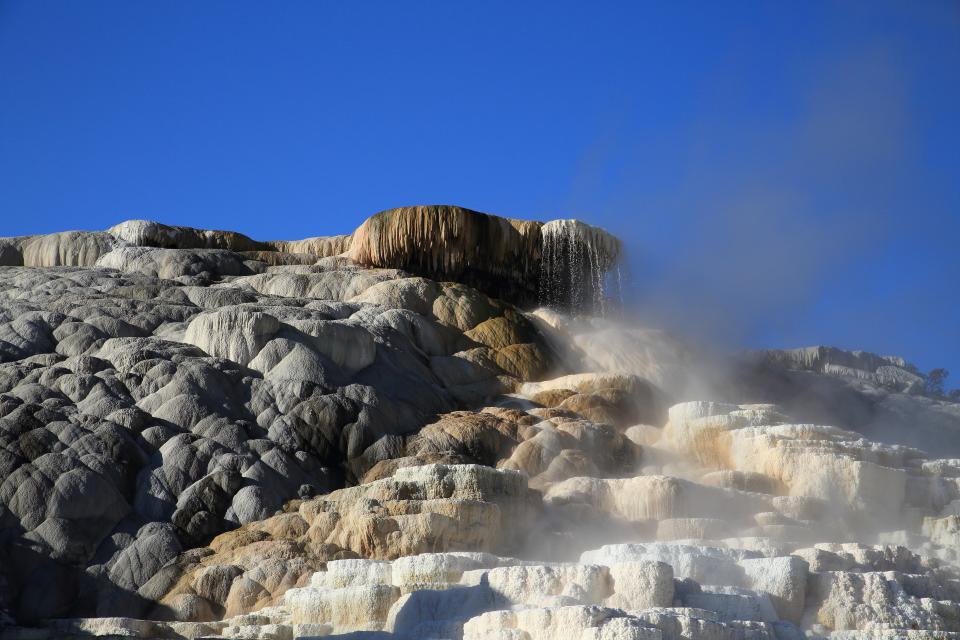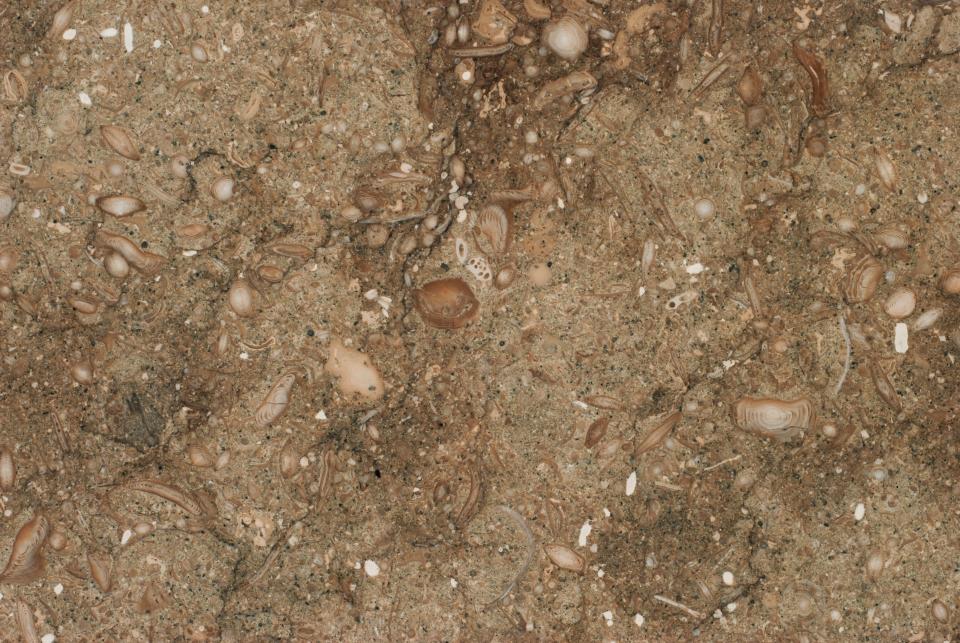What’s the Deal With People Finding Human Fossils in Their Travertine Tiles?

Photo: Bluered/REDA&CO/Universal Images Group
One European family’s recent home renovation is a literal jaw dropper. According to a Reddit user who shared images on the website’s fossils subreddit (r/fossils), their family noticed a peculiar item in their floors after installing new travertine tiles—something that looked eerily like a human jaw. “This looks like a section of [a] mandible,” the user wrote. “Could it be a hominid? Is it usual?”
According to Dr. Andrew Leier, chair of the Geological Society of America’s sedimentary geology division and an associate professor at the University of South Carolina, finding fossils in travertine is well within the realm of possibility. “It’s somewhere between uncommon and common” he says. “But it’s not a crazy thing to happen.” Travertine is a type of limestone that forms when calcium carbonate that’s dissolved in water precipitates (that is, it becomes a solid) because of a change in chemical conditions. Usually this happens around hot springs when the water emerges from the ground. “As the water comes out, it forms a thin layer of the rock, then another, then another.”

Minerva Terrace at Mammoth Hot Springs in Yellowstone National Park,
While this process is happening, anything around the spring can become coated and ensconced in the calcium carbonate, Dr. Leier explains. This could be leaves, feathers, even animals that have died nearby. The Getty Center in Los Angeles, which is clad in travertine, famously features a number of fossils on its exterior, which have become something of a scavenger hunt for those who know where to look.
According to the original Reddit poster, their family believes the travertine came from Turkey, which Dr. Leier says is a common place where the stone is quarried. “The item found in the travertine floors could have been something that died around the spring or died somewhere else and was washed into the region and covered in the travertine. Those are the two most likely scenarios,” Dr. Leier explains. But is it a human jaw?
“It absolutely looks like one,” say Amber D. Riley, MS, RDH, the immediate past president of American Society of Forensic Odontology, and Anthony R. Cardoza, DDS, a forensic dentistry consultant, in a joint email to AD. The arch shape and tooth anatomy appear human, but perhaps the most unusual finding is that it looks like the person may have had dental work done. “There appear to be absent teeth and the bone tissue has filled into where the teeth once were. Another human potentially intervened and removed teeth due to injury or disease,” they explain.

Travertine with Fossils
If it’s not a human jaw, it’s possible that it belonged to a close ancestor, such as a chimpanzee. “Though modern chimpanzees do not have this mandible arch shape or tooth type in this orientation,” Riley and Dr. Cardoza add.
Geologically speaking, Dr. Leier says that travertine forms relatively quickly. “We’re used to studying things that have formed over millions of years; this is something that can happen within thousands or even hundreds of years.” This means that the fossil in the Reddit user’s house likely originated from some point within that time frame. However, the artifact would need to be examined more closely in order to draw any conclusive answers.
As AD reported in 2022, travertine is among the most popular surface materials in home construction these days and just as revered as other fan-favorites such as marble or terrazzo. But does this mean designers—or home DIY’ers—should reconsider? Probably not. “Travertine is fantastic,” Dr. Leier says. “It’s durable and very effective.”
Originally Appeared on Architectural Digest
More Great Stories From AD
The Story Behind the Many Ghost Towns of Abandoned Mansions Across China
Inside Emily Blunt and John Krasinski’s Homes Through the Years
Take an Exclusive First Look at Shea McGee’s Remodel of Her Own Home
Modular Homes: Everything You Need to Know About Going Prefab
Beautiful Pantry Inspiration We’re Bookmarking From AD PRO Directory Designers
Not a subscriber? Join AD for print and digital access now.
Browse the AD PRO Directory to find an AD-approved design expert for your next project.

